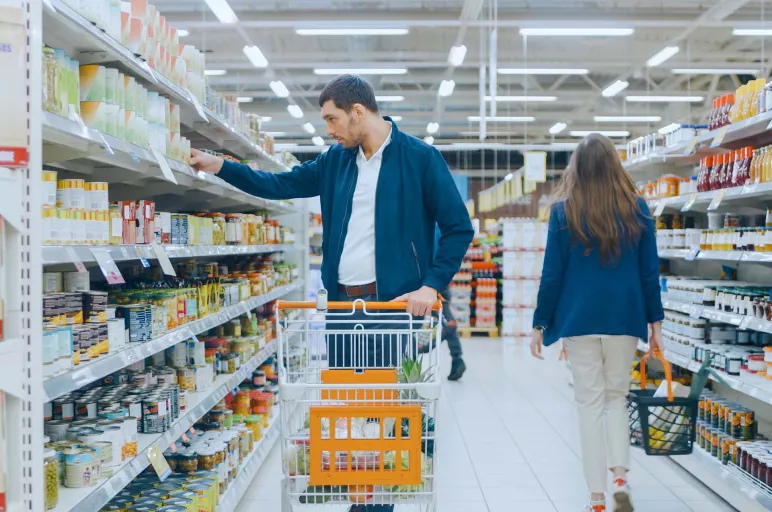
Cost Control in CPG: 3 Ways for the Industry to Stay Competitive in 2022
- Key challenges for the consumer-packaged goods industry this year: inflation, rising commodity prices and sustainability.
- The rise in oil prices as well as increasing focus on sustainability is driving up packaging costs.
- To manage these disruptions, CPG companies need to move faster toward flexible and sustainable packaging solutions, renewable energy and digital tools.
May 27, 2022 | Procurement Strategy
The consumer-packaged goods industry is facing significant pressures already this year: high inflation, supply shortages for energy and commodities and increasing requirements on sustainability from consumers and governments alike. Costs are increasing across the board.
What can CPG companies do to mitigate the impact of these challenges to stay competitive and meet rising expectations from investors, consumers and governments?
Here Is How CPG Companies Can Start Addressing Cost and Sustainability Challenges In 2022
1) Move Toward Flexible or Sustainable Packaging
When supplies of plastics were diverted from packaging to medical equipment such as PPE during the early days of the pandemic, the changes in capacity created shortages, driving up prices for resins. In addition, a shortage of labor for recycling operations increased the price for recycled plastic.
These developments make the journey to more sustainable packaging for CPG companies more of a priority than ever. Legislation to restrict the use of plastic packaging is on the rise, for instance in France, and pressure is likely to only increase. Rethinking packaging needs and shifting to flexible packaging can help enterprises mitigate increased material and transportation costs while improving performance on sustainability.
2) Leverage Renewable Energy Sources
Oil and natural gas prices were on the rise before Russia’s invasion of Ukraine and the resulting sanctions on Russian oil exports. They look to remain elevated through 2022 as the war grinds on. In addition, supply issues are affecting transportation, packaging and energy costs.
To help control ballooning energy prices and avoid passing on increased costs to consumers, companies should expand investments into energy efficiency and look for strategies, such as corporate power purchase agreements, to lower costs and yield long-term benefits.
3) Increase Visibility into ESG Goals Through Digital Tools
Consumers are now paying greater attention to corporate ESG efforts and so are governments. In the long term, companies should consider strategies to reduce plastic use in packaging or move to more sustainable alternatives.
Digitalizing procurement processes by adopting a modern, agile platform can help companies embed sustainability criteria into everyday decision making, reducing emissions and increasing cost-efficiency. Digital tools give procurement organizations greater visibility into suppliers, which can help them move ESG goals forward.
From commodities to transportation, cost increases are everywhere for CPG companies in 2022, and there are no easy fixes. Enterprises that want to maintain their competitiveness should start acting now to address those pressures. By prioritizing sustainability in procurement processes and leveraging digital procurement platforms to track KPIs, they can reduce those costs while setting themselves up for long-term success.
There are other steps CPG companies can take to address today’s challenges. To learn more, download the GEP white paper 2022 CPG Supply Chain and Procurement Outlook: Costs, Resilience, Sustainability In Focus, available on our Knowledge Bank.



